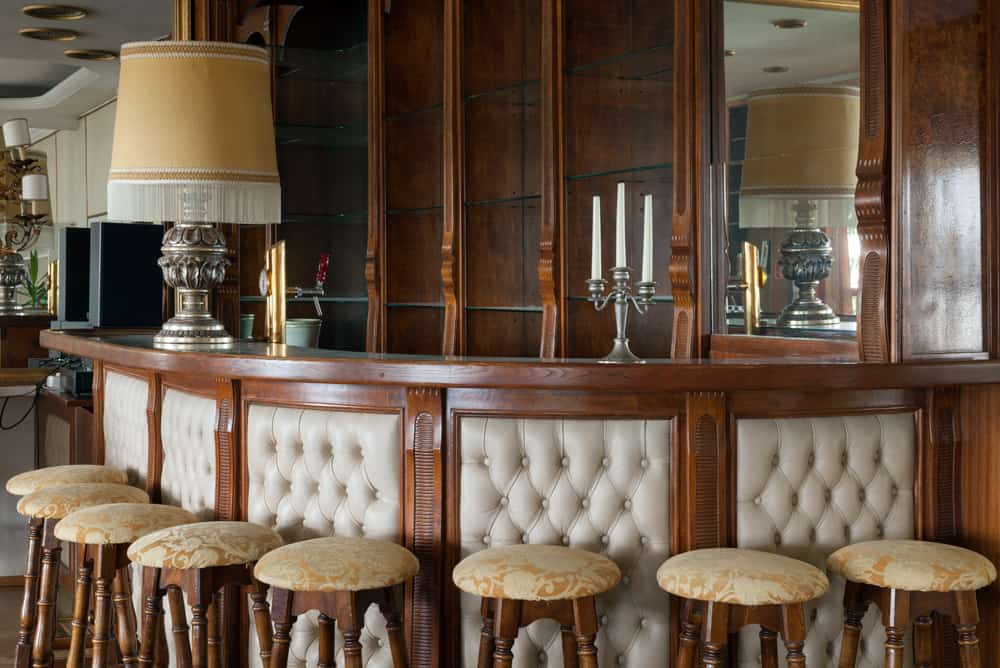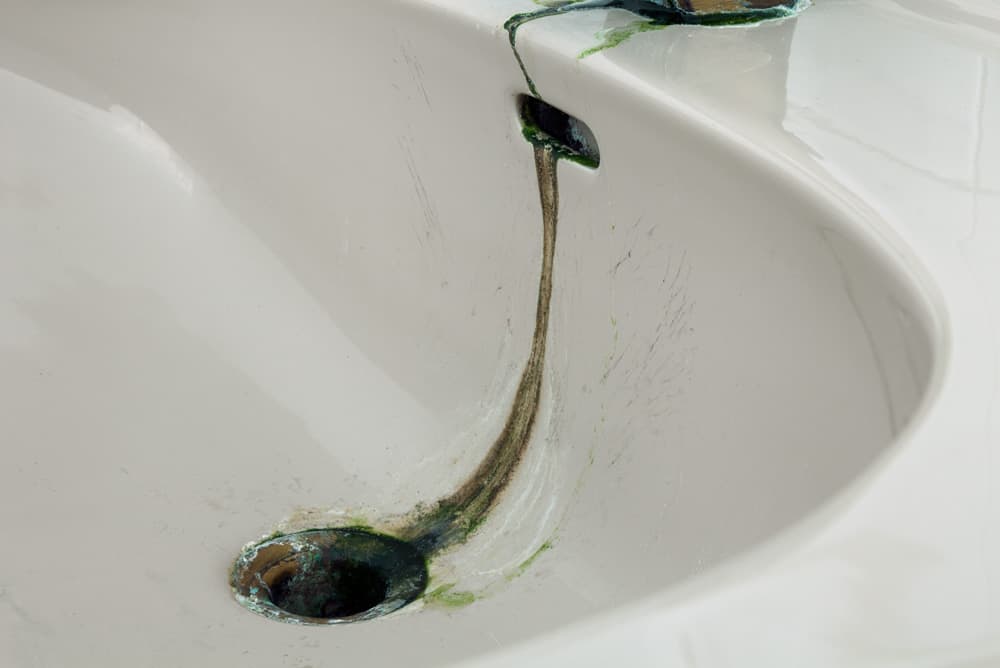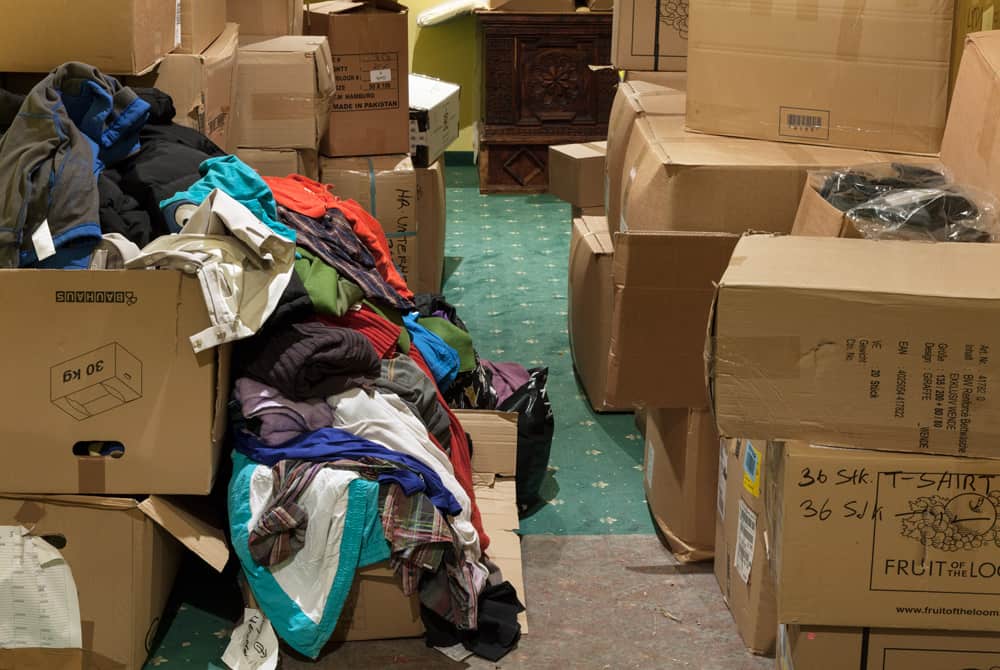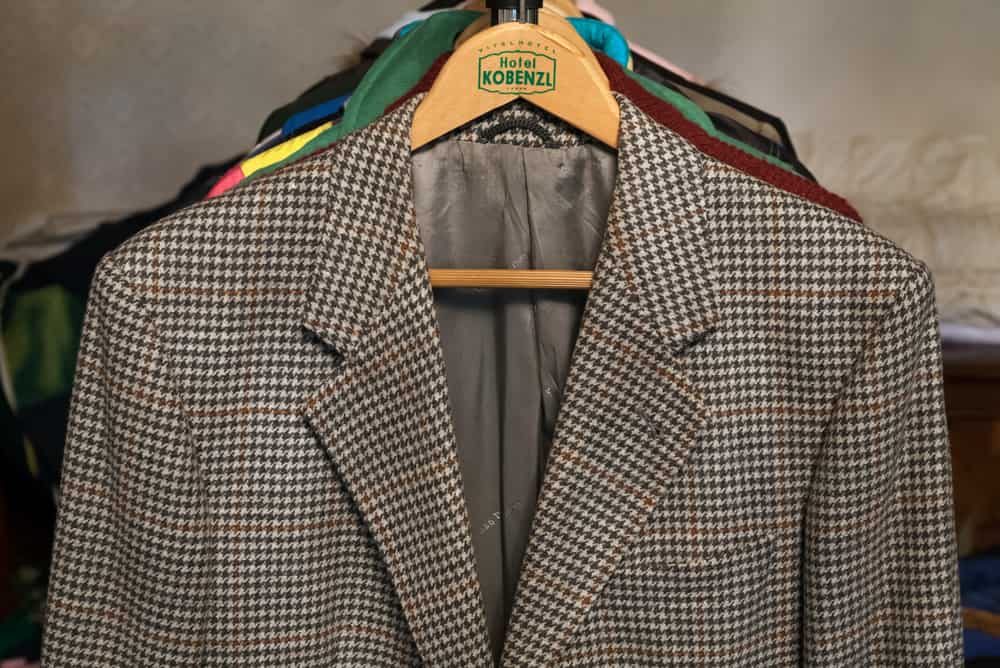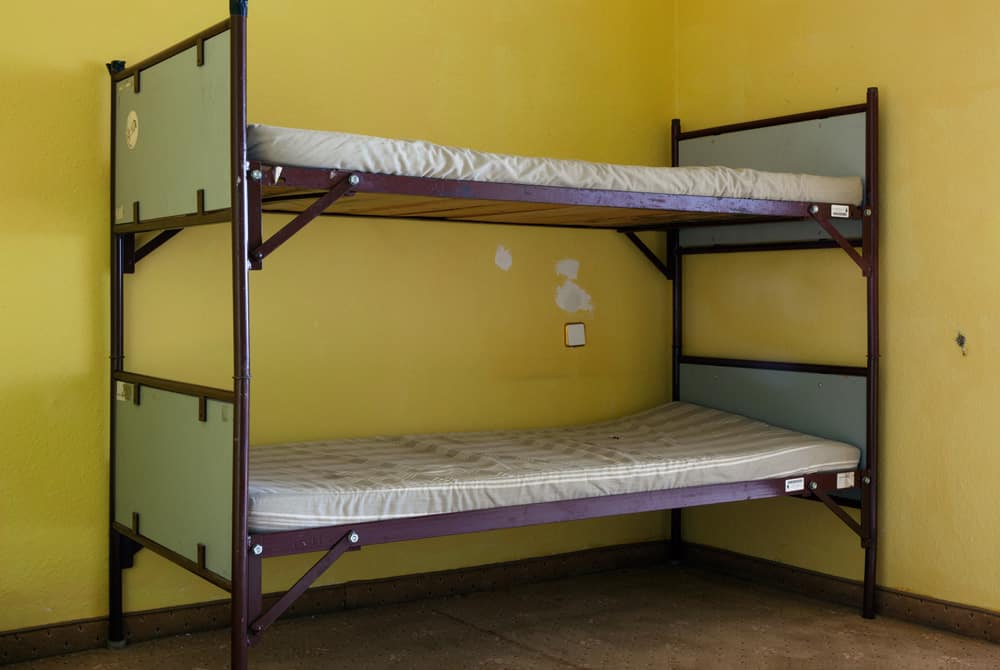In the gallery, one immediately sees silk upholstered Rococo-style armchairs and crystal chandeliers, which are piled in the dusty rooms. Silver cutlery is unpolished and dry leaves cover the marble floor. The atmosphere is full of suspense, but the compositions from the project “Hotel Kobenzl” by German photographer Matthias Hoch are currently on view at the Fotohof Gallery in Salzburg are calm and serene.
The show is based on several journeys of the photographer to the hotel between 2014 and 2016. The Kobenzl, which is well-known to Salzburgers, is located on the hill above the city, “between earth and sky”. The show consists of about 40 mid-size (app. 40×60 cm) framed and mounted color photographs and one digital display of the same size, installed in a classical way on the venue’s white walls. It is evident that the best days of the former luxury hotel – the show’s silent protagonist – are over.
The years the hotel most flourished were, probably, the 1960-70s. It was then the hotel suddenly became popular and had such prominent visitors as Richard Nixon, Margaret Thatcher, the Emperor of Japan, and, surprisingly enough, Wernher von Braun, the inventor of a V-2 rocket for Nazi Germany, who after the WW2 worked for the United States and helped the Americans to fly to the moon. Then the era of pop-star’s visits started in the hotel – it was visited by celebrities including Arnold Schwarzenegger, Herbert Grönemeyer, and Udo Jürgens. All of the aforementioned events are presented in the exhibition as historical references in the form of scans of old photos and pages from ancient guestbooks on digital display and are quite fascinating. A viewer can follow the story of the hotel further and learn that over time it went out of fashion and was closed. It stood vacant for eight years until the Austrian government, while looking for a shelter for refugees, happily rediscovered it and made a lease agreement for 15 years with its long-term owners.
Instead of pilled kitchy furniture, a new “minimalist” interior appears on the photographs – metallic bunk beds instantly reminding about prison, ragged wallpaper, second hand looking clothes hanging on the former inhabitant’s hangers.
Turning the former five-star luxury hotel into a first-admission facility for refugees is a story compelling enough to become a movie. But Hoch is not a photographer striving for hot and profitable topics like refugees in Europe today. His interest in the hotel started in 2014 by chance, and the sudden arrival of the migrants from the Middle East was only a twist – also surprising for him – in the already long story.
Nevertheless, one will not find any portraits in the exhibition. In one of his interviews, Hoch claims that he was interested in surfaces of things, in turning of three-dimensional objects into abstract compositions and even in reflecting of “aura” of the old things he had found in the hotel – not in representation of its temporary inhabitants. It seems like the exploration of abandoned interiors with a camera is popular among artists in Germany. The visual archeology of the past epochs was, for instance, of interest for Berlin photographer Christian Werner, whose project “Still life FRG – Inventory of Mr. and Ms. B’s House” deals with a house of recently deceased friend’s grandfather (in 2016 the work was on display in Kunstpalais in Erlangen). If Werner is mostly interested in the typical material world of the former Federal Republic of Germany, Hoch works with broader problems and seemingly strives – in a certain sense – to extrapolate a unique story of the hotel to European history. In that he definitely succeeds – in the dramatic biography of the small, remote hotel the most important events and phenomenons of twentieth and twenty-first century are mystically reflected – such as fascism and WW2, the Cold War, the expansion of mass culture or even the current migrant crisis in Europe.
Does the photo documentation of the newly inhabited shabby palace-style rooms only represent that the resort’s best days are gone or could it also be seen as a kind of visual representation of Spengler’s theory of “decline of the West” with its paradigm shift involving the movement away from Eurocentric point of view? The photographer doesn’t give any answers in his rather brief but capacious exhibition and poetically finishes it with the three pictures of the same landscape (actually, that is the impressive view to Salzburg from the top-located Kobenzl hotel). The view stays the same, only the clouds now are covering the city, now are opening it to a viewer again.
Natalya Reznik
Photo of the exhibition view by Natalya Reznik.
Photographs: Matthias Hoch, aus/from Hotel Kobenzl, Salzburg 2014-16
Archival Pigment Prints, 42×63 cm
©2016 Matthias Hoch/ VG Bild-Kunst Bonn
Historical photograph: US-President Richard Nixon at the Hotel Kobenzl,
invited by the Austrian Chancellor Bruno Kreisky, Salzburg, 21 May 1972.
Hotel Kobenzl/ Herzog Family Archive
Photobooks again!
December 31, 2013
Street. Leo Erken
November 5, 2013

